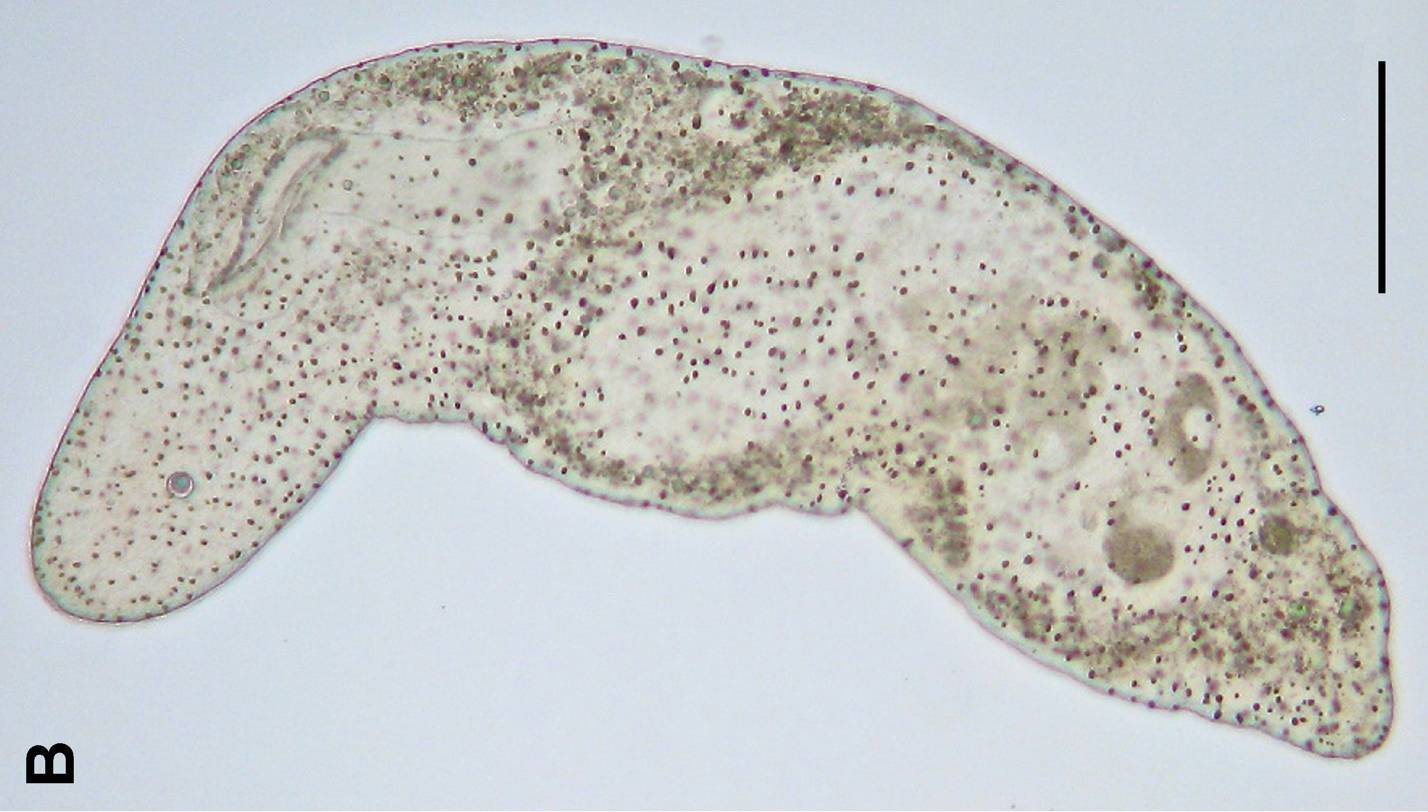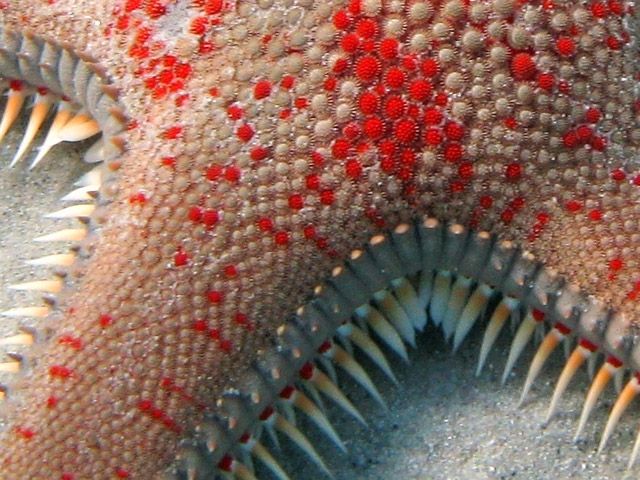|
Metrodira Subulata
''Metrodira subulata'' is a species of starfish in the family Echinasteridae. It is found on the seabed in shallow parts of the Indo-Pacific region. Description ''Metrodira subulata'' has long, slender tapering arms. The aboral (upper) surface has many granulations and large pores. The margins have a row of smooth plates and there are short spines at the junctions of the plates. The colour of the aboral surface is yellowish brown. The spines are red, which contrasts with the sombre body colour and is considered an aposematic Aposematism is the advertising by an animal to potential predators that it is not worth attacking or eating. This unprofitability may consist of any defences which make the prey difficult to kill and eat, such as toxicity, venom, foul taste or ... trait. References Echinasteridae Starfish described in 1840 {{asteroidea-stub ... [...More Info...] [...Related Items...] OR: [Wikipedia] [Google] [Baidu] |
Animalia
Animals are multicellular, eukaryotic organisms in the biological kingdom Animalia. With few exceptions, animals consume organic material, breathe oxygen, are able to move, can reproduce sexually, and go through an ontogenetic stage in which their body consists of a hollow sphere of cells, the blastula, during embryonic development. Over 1.5 million living animal species have been described—of which around 1 million are insects—but it has been estimated there are over 7 million animal species in total. Animals range in length from to . They have complex interactions with each other and their environments, forming intricate food webs. The scientific study of animals is known as zoology. Most living animal species are in Bilateria, a clade whose members have a Symmetry in biology#Bilateral symmetry, bilaterally symmetric body plan. The Bilateria include the protostomes, containing animals such as nematodes, arthropods, flatworms, annelids and molluscs, and th ... [...More Info...] [...Related Items...] OR: [Wikipedia] [Google] [Baidu] |
Echinodermata
An echinoderm () is any member of the phylum Echinodermata (). The adults are recognisable by their (usually five-point) radial symmetry, and include starfish, brittle stars, sea urchins, sand dollars, and sea cucumbers, as well as the sea lilies or "stone lilies". Adult echinoderms are found on the sea bed at every ocean depth, from the intertidal zone to the abyssal zone. The phylum contains about 7,000 living species, making it the second-largest grouping of deuterostomes, after the chordates. Echinoderms are the largest entirely marine phylum. The first definitive echinoderms appeared near the start of the Cambrian. The echinoderms are important both ecologically and geologically. Ecologically, there are few other groupings so abundant in the biotic desert of the deep sea, as well as shallower oceans. Most echinoderms are able to reproduce asexually and regenerate tissue, organs, and limbs; in some cases, they can undergo complete regeneration from a single limb. Geol ... [...More Info...] [...Related Items...] OR: [Wikipedia] [Google] [Baidu] |
Asteroidea
Starfish or sea stars are star-shaped echinoderms belonging to the class Asteroidea (). Common usage frequently finds these names being also applied to ophiuroids, which are correctly referred to as brittle stars or basket stars. Starfish are also known as asteroids due to being in the class Asteroidea. About 1,900 species of starfish live on the seabed in all the world's oceans, from warm, tropical zones to frigid, polar regions. They are found from the intertidal zone down to abyssal depths, at below the surface. Starfish are marine invertebrates. They typically have a central disc and usually five arms, though some species have a larger number of arms. The aboral or upper surface may be smooth, granular or spiny, and is covered with overlapping plates. Many species are brightly coloured in various shades of red or orange, while others are blue, grey or brown. Starfish have tube feet operated by a hydraulic system and a mouth at the centre of the oral or lower surfa ... [...More Info...] [...Related Items...] OR: [Wikipedia] [Google] [Baidu] |
Spinulosida
The Spinulosida are an order of sea stars containing at least 120 species in seven genera and one family. Spinulosids completely lack pedicellariae and have a delicate skeletal arrangement. Their name comes from the presence of numerous low spines on the aboral (upper) surface. No fossil spinulosids have yet been found. Taxonomy The following family is recognised by the World Register of Marine Species: * Echinasteridae The Echinasteridae are a family of starfish in the monotypic order Spinulosida. The family includes eight genera and about 133 species found on the seabed in various habitats around the world. Taxonomy Echinasteridae contains eight genera and ... Verrill, 1870 References Echinoderm orders {{Asteroidea-stub ... [...More Info...] [...Related Items...] OR: [Wikipedia] [Google] [Baidu] |
Echinasteridae
The Echinasteridae are a family of starfish in the monotypic order Spinulosida. The family includes eight genera and about 133 species found on the seabed in various habitats around the world. Taxonomy Echinasteridae contains eight genera and about 133 species. The two genera ''Echinaster'' and '' Henricia'' are the most speciose, forming species complexes. ''Echinaster'' has a largely tropical distribution and occurs in shallow seas including continental shelves, while ''Henricia'' is cosmopolitan, occurring mostly in cold waters, including polar habitats and abyssal locations. ''Aleutihenricia'' and ''Odontohenricia'' are native to the northeastern Pacific Ocean, in the vicinity of the Aleutian Islands. Characteristics Echinasterids are mostly five-armed starfish with thick but small discs, and long, slender, often cylindrical arms. The cuticle is covered on both the aboral (upper) and oral (lower) surfaces by a latticework of ossicles which are either flattened or rounded ... [...More Info...] [...Related Items...] OR: [Wikipedia] [Google] [Baidu] |
Metrodira
''Metrodira'' is a genus of starfish in the family Echinasteridae. Species The following species are recognised by the World Register of Marine Species: *'' Metrodira dubia'' *'' Metrodira gracilenta'' Lovén *'' Metrodira subtilis'' (Lutken, 1871) *''Metrodira subulata ''Metrodira subulata'' is a species of starfish in the family Echinasteridae. It is found on the seabed in shallow parts of the Indo-Pacific region. Description ''Metrodira subulata'' has long, slender tapering arms. The aboral (upper) surface h ...'' Gray, 1840 References Echinasteridae Asteroidea genera {{Asteroidea-stub ... [...More Info...] [...Related Items...] OR: [Wikipedia] [Google] [Baidu] |
Species
In biology, a species is the basic unit of Taxonomy (biology), classification and a taxonomic rank of an organism, as well as a unit of biodiversity. A species is often defined as the largest group of organisms in which any two individuals of the appropriate sexes or mating types can reproduction, produce Fertility, fertile offspring, typically by sexual reproduction. Other ways of defining species include their karyotype, DNA sequence, morphology (biology), morphology, behaviour or ecological niche. In addition, paleontologists use the concept of the chronospecies since fossil reproduction cannot be examined. The most recent rigorous estimate for the total number of species of eukaryotes is between 8 and 8.7 million. However, only about 14% of these had been described by 2011. All species (except viruses) are given a binomial nomenclature, two-part name, a "binomial". The first part of a binomial is the genus to which the species belongs. The second part is called the specifi ... [...More Info...] [...Related Items...] OR: [Wikipedia] [Google] [Baidu] |
Starfish
Starfish or sea stars are star-shaped echinoderms belonging to the class Asteroidea (). Common usage frequently finds these names being also applied to ophiuroids, which are correctly referred to as brittle stars or basket stars. Starfish are also known as asteroids due to being in the class Asteroidea. About 1,900 species of starfish live on the seabed in all the world's oceans, from warm, tropical zones to frigid, polar regions. They are found from the intertidal zone down to abyssal depths, at below the surface. Starfish are marine invertebrates. They typically have a central disc and usually five arms, though some species have a larger number of arms. The aboral or upper surface may be smooth, granular or spiny, and is covered with overlapping plates. Many species are brightly coloured in various shades of red or orange, while others are blue, grey or brown. Starfish have tube feet operated by a hydraulic system and a mouth at the centre of the oral or lower su ... [...More Info...] [...Related Items...] OR: [Wikipedia] [Google] [Baidu] |
Family (biology)
Family ( la, familia, plural ') is one of the eight major hierarchical taxonomic ranks in Linnaean taxonomy. It is classified between order and genus. A family may be divided into subfamilies, which are intermediate ranks between the ranks of family and genus. The official family names are Latin in origin; however, popular names are often used: for example, walnut trees and hickory trees belong to the family Juglandaceae, but that family is commonly referred to as the "walnut family". What belongs to a family—or if a described family should be recognized at all—are proposed and determined by practicing taxonomists. There are no hard rules for describing or recognizing a family, but in plants, they can be characterized on the basis of both vegetative and reproductive features of plant species. Taxonomists often take different positions about descriptions, and there may be no broad consensus across the scientific community for some time. The publishing of new data and opi ... [...More Info...] [...Related Items...] OR: [Wikipedia] [Google] [Baidu] |
Aposematism
Aposematism is the Advertising in biology, advertising by an animal to potential predation, predators that it is not worth attacking or eating. This unprofitability may consist of any defences which make the prey difficult to kill and eat, such as toxicity, venom, foul taste or smell, sharp spines, or aggressive nature. These advertising signals may take the form of conspicuous animal coloration, coloration, sounds, odours, or other perception, perceivable characteristics. Aposematic signals are beneficial for both predator and prey, since both avoid potential harm. The term was coined in 1877 by Edward Bagnall Poulton for Alfred Russel Wallace's concept of warning coloration. Aposematism is exploited in Müllerian mimicry, where species with strong defences evolve to resemble one another. By mimicking similarly coloured species, the warning signal to predators is shared, causing them to learn more quickly at less of a cost. A genuine aposematic signal that a species actually ... [...More Info...] [...Related Items...] OR: [Wikipedia] [Google] [Baidu] |





